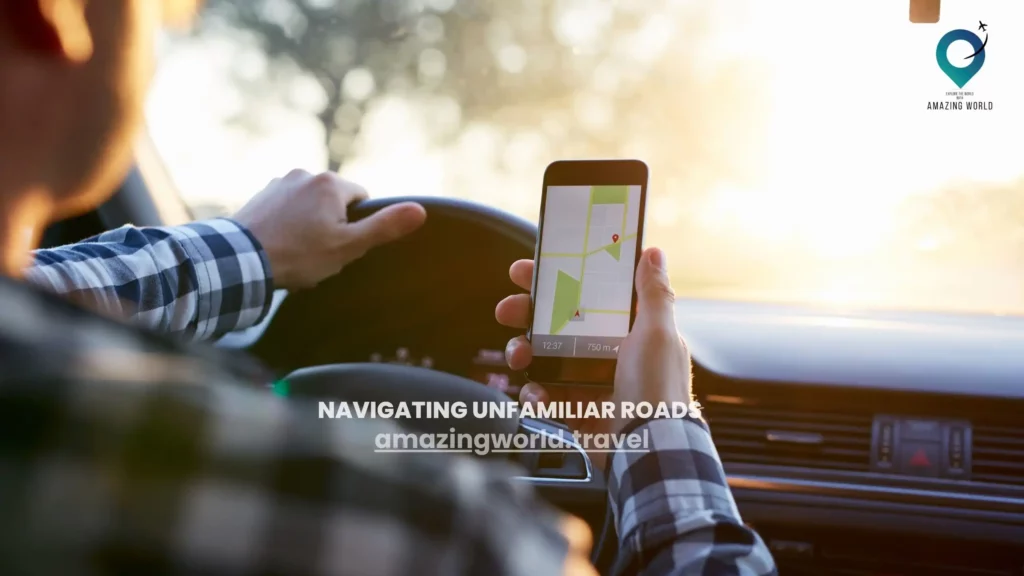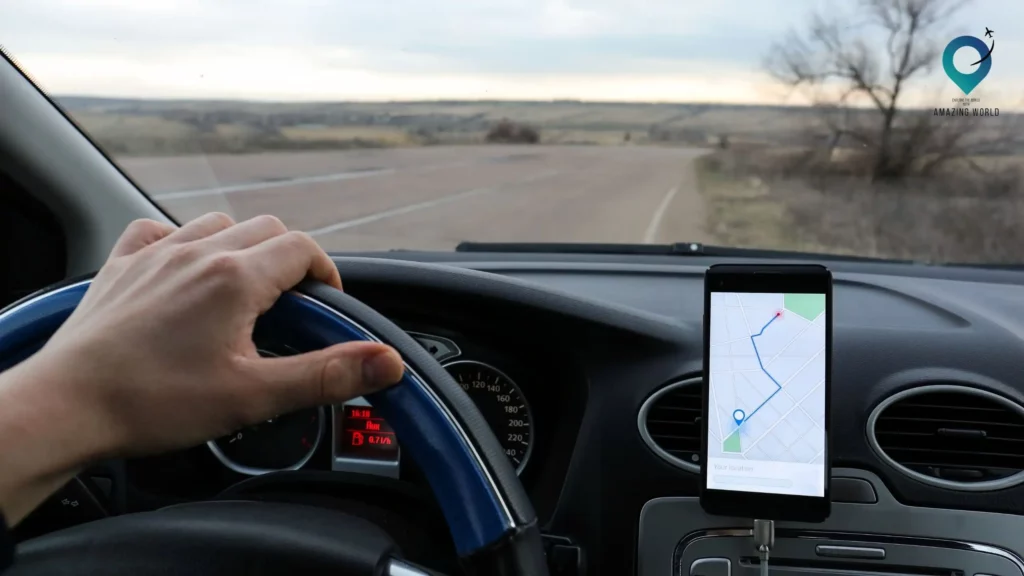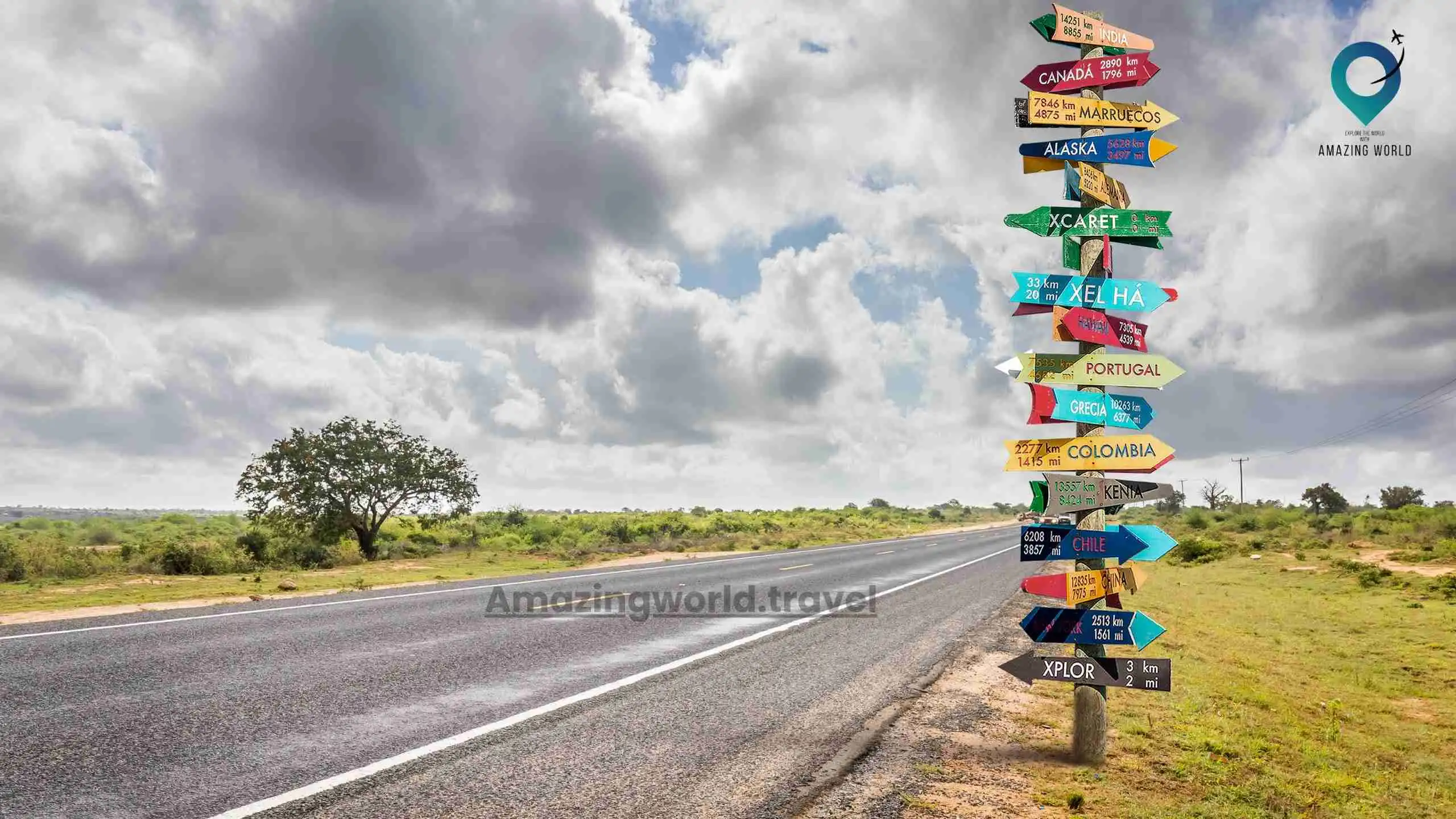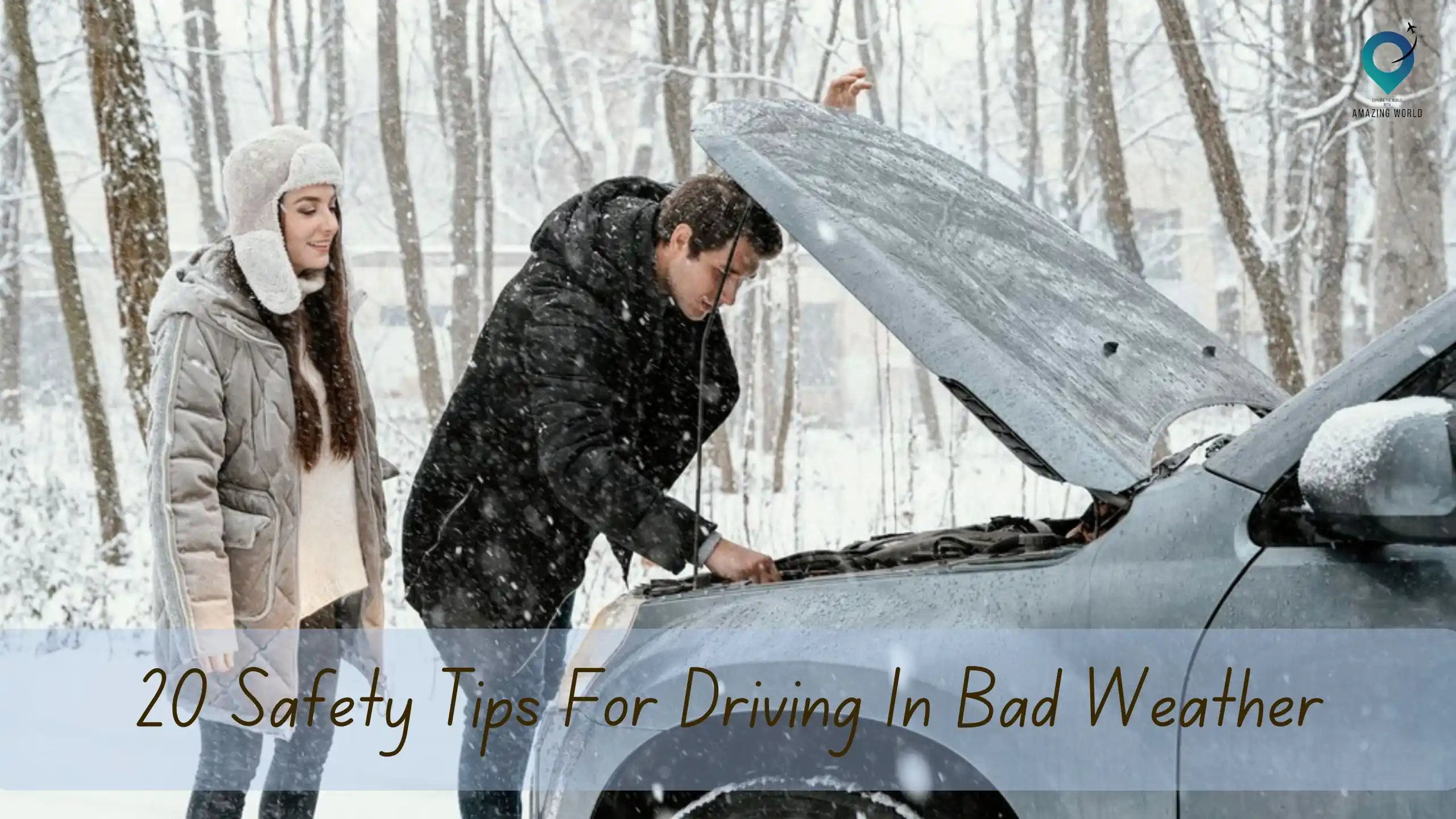
Are you gearing up for an exciting road trip adventure? Picture this: the open road stretching out before you, new horizons beckoning, and a world of possibilities awaiting your arrival. As you embark on this thrilling journey, it’s important to equip yourself with the knowledge and expertise to navigate unfamiliar roads like a seasoned explorer.
That’s why we’ve compiled this comprehensive guide of 10 tips for navigating unfamiliar roads during a road trip, ensuring you have the confidence and savvy to conquer any route that lies ahead.
Plan Your Route in Advance
Planning your route in advance is a fundamental step in ensuring a smooth and stress-free road trip experience. By taking the time to map out your journey before hitting the road, you’ll have a clear sense of direction and be well-prepared for the adventure ahead. Here are some key points to consider when planning your route:
- Choose the Right Maps and Navigation Tools: Start by selecting reliable maps or navigation tools that suit your preferences. Options range from traditional paper maps and atlases to advanced GPS devices and smartphone apps. Find the method that works best for you and ensures accurate guidance throughout your trip.
- Research the Best Routes: Conduct thorough research to identify the most efficient and scenic routes to your destination. Consider factors such as distance, road conditions, and any potential construction or detours. Take into account the time it will take to reach each destination and plan for any additional stops or side trips you may want to make along the way.
- Consider Alternate Routes: It’s always wise to have backup routes in mind. Unforeseen circumstances such as traffic congestion or road closures can disrupt your original plan. By identifying alternative routes in advance, you’ll be prepared to adapt and continue your journey smoothly.
- Take Note of Rest Areas and Amenities: Look for rest areas, gas stations, and other amenities along your route. These pit stops are essential for refueling, restroom breaks, stretching your legs, and grabbing a quick bite to eat. Incorporate these stops into your itinerary to ensure you stay refreshed and energized during your road trip.
- Check for Scenic Attractions and Points of Interest: Road trips offer the opportunity to explore new places and discover hidden gems. Research and note down any scenic attractions, landmarks, or points of interest along your route. These can add a touch of excitement and make your journey even more memorable.
- Consider Time and Seasonal Factors: Take into account the time of year, weather conditions, and daylight hours when planning your route. Certain roads or attractions may be affected by seasonal closures or limited accessibility. Adjust your plans accordingly to optimize your road trip experience.
- Share Your Itinerary: It’s always a good idea to share your itinerary with a trusted family member or friend. Provide them with details of your route, estimated travel times, and planned stops. This way, someone will be aware of your whereabouts and can assist if needed.
Use Reliable Navigation Tools

When embarking on a road trip and navigating unfamiliar roads, having reliable navigation tools is paramount. These tools will guide you accurately, provide real-time updates, and ensure you stay on track. Here are some trustworthy navigation options to consider:
- GPS Devices: Dedicated GPS devices, such as those from Garmin or TomTom, offer reliable and comprehensive navigation features. They provide turn-by-turn directions, voice prompts, and visual maps, ensuring you have clear guidance throughout your journey. Many GPS devices also offer real-time traffic updates to help you avoid congested areas.
- Smartphone Navigation Apps: There is a wide array of navigation apps available for smartphones, such as Google Maps, Apple Maps, and Waze. These apps utilize GPS technology and provide detailed maps, real-time traffic information, and voice-guided directions. They often offer additional features like alternative route suggestions, estimated arrival times, and nearby points of interest.
- Offline Maps: In areas with limited or no cellular service, offline maps can be a lifesaver. Apps like MAPS.ME and Here WeGo allow you to download maps in advance, which can be accessed without an internet connection. This ensures you won’t get lost even in remote or spotty coverage areas.
- Dashboard-Mounted Devices: Dashboard-mounted navigation systems, typically integrated into newer vehicle models, offer convenience and enhanced visibility. These systems display maps and directions on a screen within your line of sight, minimizing distractions while driving. They often provide additional features like voice commands, traffic updates, and points of interest.
- Paper Maps and Atlases: While traditional paper maps may seem old-fashioned, they can still be a valuable backup option. Carrying a detailed road atlas or regional maps allows you to navigate even if your electronic devices fail or lose battery power. Paper maps also provide a broader perspective of your entire route and can be useful for planning alternative paths.
Stay Alert and Observe Road Signs
When navigating unfamiliar roads during a road trip, staying alert and paying attention to road signs is of utmost importance. Road signs provide crucial information that can help you navigate safely and effectively. Here’s why it’s essential to stay vigilant and observe road signs:
- Ensure Safety: Road signs play a vital role in ensuring the safety of all road users. They provide valuable information about speed limits, road conditions, upcoming hazards, and regulatory instructions. By paying attention to these signs, you can adjust your driving behavior accordingly and avoid potential accidents.
- Navigate Route Changes: Road signs help you navigate through complex intersections, highway exits, and diverging routes. They indicate directions, lane changes, and distances to specific destinations. By observing these signs, you can make informed decisions and smoothly navigate through unfamiliar road networks.
- Avoid Traffic Violations: Traffic signs communicate various rules and regulations that must be followed to avoid traffic violations and potential fines. They indicate prohibited actions, such as no-entry zones, no-parking areas, or one-way streets. By being aware of these signs and adhering to their instructions, you can prevent unnecessary traffic violations and maintain a clean driving record.
- Find Services and Amenities: Road signs often provide information about nearby services and amenities. They indicate the availability of fuel stations, rest areas, restaurants, hotels, and emergency services. By observing these signs, you can plan your stops strategically, ensuring you have access to the necessary facilities and resources during your road trip.
- Stay Prepared for Road Conditions: Road signs can warn you about potential road hazards and conditions ahead. They may indicate curves, steep gradients, slippery surfaces, or construction zones. By being attentive to these signs, you can adjust your driving speed and behavior accordingly, ensuring your safety and that of other drivers.
- Understand Local Driving Norms: Road signs can vary from one region to another, reflecting local driving norms and regulations. Observing these signs helps you understand and adapt to local driving customs. For example, signs indicating right-of-way or pedestrian crossings may differ in different countries. By familiarizing yourself with these signs, you can navigate unfamiliar roads more confidently and respectfully.
Follow Local Traffic Laws
Every region may have different traffic laws and regulations. Before embarking on your road trip, take some time to familiarize yourself with the local traffic laws of the areas you’ll be driving through. This will help you avoid any potential legal issues and ensure your safety and the safety of other drivers.
Also, if you are looking best hotels and Homestay deals then we recommend booking your hotels and homestay with priceline.com
Take Regular Breaks
Long hours of driving can be physically and mentally exhausting. It’s important to take regular breaks to rest, stretch your legs, and rejuvenate. Plan your journey with scheduled stops at rest areas, scenic viewpoints, or interesting landmarks along the way. Not only will this give you a chance to recharge, but it will also allow you to discover hidden gems and make your road trip even more memorable.
Be Mindful of Local Customs and Driving Habits
Different regions may have distinct driving customs and habits. It’s essential to be mindful of these differences and adapt accordingly. For example, in some countries, driving on the left side of the road is the norm, while in others, honking the horn is considered impolite.
By understanding and respecting local customs, you can navigate unfamiliar roads with ease and avoid any cultural misunderstandings.
Maintain a Safe Following Distance
Maintaining a safe following distance is crucial, especially when driving on unfamiliar roads. Keep a reasonable distance between your vehicle and the one in front of you to allow for unexpected stops or maneuvers. This will provide you with more time to react and prevent accidents.
Stay Calm and Avoid Road Rage
When navigating unfamiliar roads during a road trip, it’s crucial to stay calm and avoid road rage. Challenging driving conditions, traffic congestion, and the pressures of being in an unfamiliar environment can sometimes lead to frustration or anger. However, maintaining composure and practicing patience is essential for your safety and the enjoyment of your journey. Here’s why staying calm and avoiding road rage is essential:
- Focus on Safety: Road rage can impair your judgment and reaction time, making you more prone to accidents or risky driving maneuvers. By staying calm, you can maintain focus on the road and prioritize the safety of yourself, your passengers, and other road users.
- Reduce Stress and Anxiety: Navigating unfamiliar roads can be stressful, but reacting with anger or frustration will only escalate your stress levels. Staying calm helps to manage stress and anxiety, creating a more relaxed and enjoyable road trip experience for everyone involved.
- Maintain Positive Interactions: Road rage often leads to aggressive behaviors, such as tailgating, honking excessively, or engaging in confrontations with other drivers. By avoiding road rage, you contribute to a positive driving environment and promote mutual respect among fellow road users.
- Avoid Legal Consequences: Engaging in road rage can have legal consequences, including traffic citations, fines, or even criminal charges. By keeping your emotions in check and avoiding aggressive behaviors, you protect yourself from potential legal troubles during your road trip.
- Set a Good Example: As a responsible driver, staying calm and composed sets a positive example for others, including your passengers, friends, and family members. By demonstrating patience and respect on the road, you contribute to a culture of safe and courteous driving.
- Focus on Enjoying the Journey: Road trips are meant to be enjoyable adventures, filled with discovery and memorable moments. By staying calm, you can better appreciate the scenery, engage in conversations with your fellow travelers, and fully immerse yourself in the road trip experience.
To help you stay calm and avoid road rage, consider the following strategies:
- Practice Deep Breathing: If you feel frustration or anger building up, take slow, deep breaths to help calm your mind and body.
- Listen to Soothing Music: Create a playlist of calming or uplifting music to help maintain a positive and relaxed mood while driving.
- Practice Mindfulness: Stay present and focused on the road, observing your thoughts and emotions without letting them escalate into road rage.
- Avoid Engaging with Aggressive Drivers: If you encounter an aggressive driver, avoid reacting or retaliating. Instead, focus on maintaining a safe distance and continuing your journey responsibly.
Remember, road trips are meant to be enjoyable experiences. By staying calm and avoiding road rage, you can ensure the safety and harmony of your road trip while creating lasting memories along the way.
Be Prepared for Emergencies
No matter how well you plan, emergencies can still happen. Before embarking on your road trip, make sure you have an emergency kit in your vehicle. This kit should include essential items such as a spare tire, jack, jumper cables, flashlight, first aid supplies, and a roadside assistance contact number.
Being prepared will give you peace of mind and ensure that you’re ready to handle unexpected situations.
Trust Your Instincts and Ask for Help When Needed
Last but not least, trust your instincts and don’t hesitate to ask for help when needed. If you feel lost or unsure about a particular route, don’t be afraid to seek assistance. Stop at a nearby gas station or ask locals for directions.
People are often friendly and willing to lend a hand to travelers in need. Trusting your instincts and reaching out for help will help you navigate unfamiliar roads more confidently.
Conclusion
Embarking on a road trip and exploring unfamiliar roads can be an exhilarating experience. By following these 10 tips for navigating unfamiliar roads, you’ll be well-prepared to tackle any challenges that come your way.
Remember to plan your route, use reliable navigation tools, stay alert, and be mindful of local customs and traffic laws. Take regular breaks, maintain a safe following distance, and stay calm throughout your journey.
Finally, trust your instincts, ask for help when needed, and enjoy the thrill of discovering new destinations.
Safe travels!
How much did you like Our detailed 10 Tips for Navigating Unfamiliar Roads during a Road trip? Review Also, please share these Blogs with your friends on social media.
Related Article –
- Road Trips Ideas | 12 Tips to Prepare Your Car for a Long Road Trip?
- 150 Best Places to Visit in the United States In 2023
- Road Trip With Kids
- How to Stay Awake While Driving Long Distances
- Audiobooks to Listen to On Your Road Trip
- How to Create an Epic Itinerary Road Trip
- Best Rental Cars For Travel Adventures
Navigating Unfamiliar Roads (FAQs)
How can I stay awake and alert during long hours of driving?
To stay awake and alert during long hours of driving, make sure you get enough rest before your journey. Take regular breaks to stretch, walk around, and have a snack. Stay hydrated and avoid consuming heavy meals that may make you feel drowsy. If possible, share the driving responsibilities with a fellow traveler to ensure you both have enough rest.
Are there any driving habits or customs that I should be aware of when traveling abroad?
Yes, driving habits and customs vary from country to country. It's important to familiarize yourself with the specific driving rules and regulations of the country you're visiting. Some countries drive on the left side of the road, while others drive on the right. Additionally, certain countries may have specific road etiquette or rules regarding honking, overtaking, or using headlights. Researching and understanding these customs beforehand will help you navigate unfamiliar roads smoothly.
What should I do if I encounter bad weather conditions during my road trip?
If you encounter bad weather conditions during your road trip, it's crucial to prioritize safety. Reduce your speed, increase the distance between your vehicle and others, and use your headlights and windshield wipers as necessary. If the weather becomes severe, consider finding a safe place to pull over and wait until conditions improve. Stay informed about weather forecasts and road advisories to plan your journey accordingly.
Can I rely on roadside assistance services when facing car troubles on unfamiliar roads?
Roadside assistance services are designed to help drivers in need, regardless of their location. If you face car troubles on unfamiliar roads, contact your roadside assistance provider for help. They can provide services such as towing, jump-starting a battery, or fixing a flat tire. It's recommended to have the contact information of your roadside assistance provider readily available in case of emergencies.
Is it safe to stop and ask locals for directions?
Stopping and asking locals for directions can be a helpful way to navigate unfamiliar roads. However, exercise caution and choose safe locations to stop, such as gas stations or well-lit areas. If you feel uncomfortable or sense something suspicious, it's best to trust your instincts and find alternative sources of assistance, such as using your navigation system or contacting a nearby police station.

Meet David Hoper, a passionate travel Blog writer with 7+ years of experience in travel content. Through his exemplary storytelling and engaging narratives, he shares his experiences and brings destinations to life. With a keen eye for detail and a love for exploration, he has cultivated a diverse portfolio of travel blogs that inspire and inform readers worldwide.








